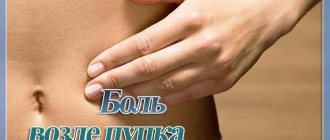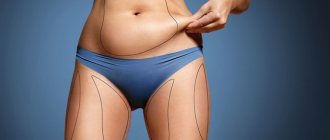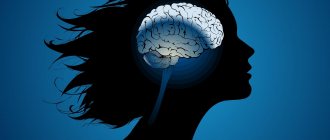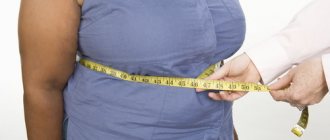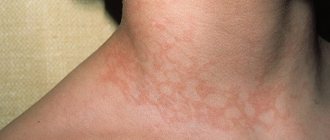What are abdominal cramps in people: symptoms
The main symptoms of abdominal cramps include the following:
- Acute infection in the intestines. First, spasms appear, then the patient feels sick and vomits. The pain bothers the patient constantly and becomes acute. Your temperature may also rise.
- Appendicitis. In the first stages of the disease, spasms appear, which over time move to the iliac region of the abdomen on the right. The pain becomes aching, dull, sometimes even sharp. The temperature of the whole body increases.
- Tumor. First, a sharp pain appears in a separate part of the intestine. As the tumor increases, spasms occur more often, and the pain becomes dull and aching. There is often discharge in the form of blood, the temperature rises, but not much. The patient may also lose weight rapidly.
- Stomach ulcer. Pain appears in the stomach area half an hour or 1 hour 30 minutes after eating.
- Neftoprosis, kidney stones, pyelonephritis. Spasms are present on the left or right side of the abdomen. The lumbar region of the back often hurts. If a person has an infected disease, the temperature rises, headaches, and the person feels weak. The spasms disappear when the attacks stop.
- Termination of pregnancy, bleeding in the uterus, heavy periods. The woman is bothered by sharp and severe pain. They disappear after some time. The disease is accompanied by heartburn, nausea, diarrhea, vomiting, and constipation.
- Sphincter of Oddi dysfunction . Spasms appear periodically. The patient suffers from vomiting, nausea, bitterness in the mouth.
- Gastroesophageal reflux. When the patient eats food, it passes into the esophagus. Due to irritation, the walls of the esophagus begin to contract. Spasms occur in the navel and chest area.
- Stressful or depressive state, psychasthenia. The person’s psyche is disturbed, he experiences short spasms in any area of the abdomen. Then the patient may suffer from diarrhea or, conversely, constipation.
Manifestations
Gastrointestinal diseases
Sharp acute pain can be caused by a burn of the mucous membranes or poisoning. A burning sensation indicates an exacerbation of ulcers and gastritis (with gastritis, pain occurs either after eating or when a feeling of hunger occurs). A dull, aching pain is a common manifestation of a chronic disease. Cramping pain that bothers you at night is a characteristic sign of an ulcer. Severe cramping pain is a sign of gastrointestinal infections (in such cases, abdominal pain is accompanied by a rise in temperature).
What to do : if you have an established chronic disease, take the necessary medicine and consult your doctor as soon as possible.
Spasms, cramps in the abdomen in women, men, children: causes
Now we list all the main causes of abdominal cramps:
- The functioning of the digestive system is disrupted. This can happen with poor diet, abuse of fatty foods, constant stress and fatigue.
- Renal colic.
- Such spasms occur due to inflammation of the appendix.
- Women over 30 begin to experience cramps when they start menstruating. However, this phenomenon can be easily explained - when menstruation begins, the hormonal levels temporarily change, causing the muscles of the uterus to contract. In this case, as a rule, the muscles of the organs located nearby begin to contract.
- Abdominal cramps can occur due to IBS.
Depending on location
Treatment of intestines for spasms and pain
What to do with intestinal colic in the abdomen, the doctor decides based on the results of the examination, medical history, taking into account the age and general health of the patient - treatment for an adult and a child can differ significantly.
During therapy the following directions can be used:
- drug treatment aimed at eliminating symptoms, normalizing the balance of microflora and intestinal motility, restoring the enzymatic function of the pancreas and other disorders identified during the examination;
- surgical treatment in cases where the patient has structural changes in the large or small intestine, multiple polyps or other neoplasms that interfere with the normal functioning of the organ;
- diet therapy, the purpose of which is to facilitate the work of the intestines as much as possible for its speedy recovery and eliminate factors leading to irritation of its walls.
The treatment package is selected exclusively individually, taking into account the causes and complications of the disease, as well as its clinical manifestations. Therefore, specialists of a narrow profile - a gynecologist, urologist, endocrinologist - can take part in the formation of a therapy program. If intestinal spasms due to nerves are detected, treatment includes consultations with a clinical psychologist, and in case of intestinal innervation disorders, a neurologist.
Strong, sharp spasms, cramps in the abdomen in men and women in the abdomen: causes
Often, abdominal cramps in women can occur in the following cases:
- Pregnancy. Spasms occur along with pain due to stretching of the uterus.
- Ovulation. There may be severe pain that lasts for 24 hours.
In both women and men of any age, spasms and cramps in the abdomen appear for the following reasons:
- Strong physical activity. The spasm can occur in the ribs on the right or left side. The person may also feel twitching in the same area.
- Severe nervous condition. Cramps occur when the abdominal muscles and muscle tissue begin to contract. Sometimes this condition is accompanied by flatulence.
Severe cramps
Febrile seizures
This is a fairly common occurrence when it comes to children under 6 years of age. It is believed that every tenth child responds to a rise in temperature at least once in his life with a generalized convulsive seizure.
Typically the temperature is required to rise above 38.5 degrees. Then, in the still imperfect child’s brain, foci of pathological excitation arise, triggering many false signals to the muscles.
It looks scary, but in reality everything is not so dangerous: usually the seizure goes away within 2-3 minutes, but it can last 15, after which it ends as suddenly as it began.
And what is important - without causing any harm to the baby. Only seizures lasting more than half an hour require hospitalization and observation. You should also call a doctor if a child over 6 years of age, a teenager, or an adult develops seizures in response to a fever.
What to do? The only way you can and should help a child is to be close to him and make sure he doesn’t get hurt. Just in case, be prepared to turn your head to the side if vomiting begins. Forget about sticking spoons in your mouth.
In attempts to unclench your teeth and pull your tongue out of your mouth, you will only injure yourself and the child. Epilepsy subsequently develops in only 3% of children who have had febrile seizures, but it is still worth doing an electroencephalogram after recovery.
Muscle cramps in the abdomen without diarrhea: causes
- Involuntary abdominal spasms that are caused by illness can often provoke unpleasant gastrointestinal symptoms.
- Spasms sometimes occur due to severe food or chemical poisoning. Spasms that occur as a result of pathologies are generally not accompanied by additional symptoms. You can suspect that you have some kind of disease based on certain signs.
- Often, abdominal cramps can appear if a woman has inflammation of the uterus, as well as the appendages.
As a rule, illnesses are accompanied by severe pain, high fever, and bleeding:
- Adnexitis. The main causes of the disease are inflammation and infection. A cramp appears on one side of the abdomen or on both sides at once.
- Ectopic pregnancy. The egg does not penetrate the uterus, it remains inside the tube. The spasms become stronger over time, causing severe pain.
- Apoplexy of the ovary. Pain usually appears during ovulation due to the fact that the woman is sexually active or engages in intense sports. A woman may lose strength, she often faints, and she bleeds profusely.
- Endometriosis. Spasms occur below the navel and also affect other areas of the abdomen.
- Adhesive processes. They appear if organs stick together after surgery or a prolonged inflammatory process. The pain is severe, reminiscent of the pain before menstruation.
Spasms
Spasms also appear for the following reasons:
- Kidney diseases.
- Inflammatory process in the kidneys.
- Stones in the kidneys.
- Kidney prolapse.
- If a woman suffers from cystitis, she may also experience cramps in the lower abdomen.
Rectus abdominis syndrome
Abdominal pain or abdominal pain is a common reason for patients seeking medical help. Over a 5-year follow-up period, up to half of individuals experience abdominal pain.
There are several types of abdominal pain:
1) visceral - associated with damage to internal organs, most often the digestive organs. It is characterized by unclear localization, i.e. the pain zone only approximately corresponds to the affected zone. This pain is often associated with eating, defecation, etc.
2) parietal - occurs when the parietal peritoneum is involved in the process of inflammation. The pain is usually clearly localized, sharp, cutting, stabbing, and is accompanied by symptoms of peritoneal irritation.
3) referred pain - occurs when several zones are innervated by one segment of the spinal cord. For example, abdominal pain can occur with myocardial infarction.
4) projection pain - occurs when nerves are damaged, and the place of pain perception corresponds to the zone innervated by this nerve.
This article will discuss one of the diseases that is characterized by projection pain, namely anterior cutaneous nerve entrapment syndrome . It is also called rectus abdominis syndrome. In the English-language medical literature, the term ACNES is used (anterior cutaneous nerve entrapment syndrome, which translated into Russian means anterior cutaneous nerve entrapment syndrome), which we will use further in this article.
ACNES is one of the common causes of abdominal pain that remains unrecognized. On average, the prevalence of this syndrome is 1:1800-2000. In adolescents, one out of eight cases of chronic abdominal pain is caused by anterior cutaneous nerve entrapment syndrome. Up to 2% of cases of patients visiting a hospital emergency room with acute abdominal pain are caused by ACNES.
Pathogenesis of ACNES.
In ACNES, the lower thoracoabdominal intercostal nerves (Th8-Th12) are involved in the pathological process. They pass between the internal oblique and transverse abdominis muscles to the point where they reach the rectus abdominis muscles. Here the nerves turn to enter the rectus abdominis channels. It is assumed that compression of the nerves in the rotation zone is the leading mechanism for the development of ACNES. Pinching occurs due to muscle contraction, which can cause additional compression of the nerve, its ischemia, and, as a result, leads to severe pain.
Clinical picture of ACNES.
Pain (dull or sharp) is usually localized in a certain area - along the edge of the rectus abdominis muscle in the umbilical region or in the right hypochondrium. The pain is usually chronic, constant or frequent, less often in the form of individual episodes. The area of pain in most cases can be easily identified by palpation in the painful area. In rare cases, when the ilioinguinal and iliohypogastric nerves (Th12-L1) are pinched, the pain may have an atypical localization: in the iliac region and groin. Localization of pain in the right hypochondrium can simulate an attack of biliary colic.
The pain may vary depending on the person's posture, worsening when lying on the side of pain or sitting. Pain sensations are reduced when lying on your back. Coughing, laughing, bumpy driving, running, wearing tight belts and corsets, as well as exercise lead to increased abdominal pain.
Diagnosis of ACNES.
Diagnostic criteria for anterior cutaneous nerve entrapment syndrome include the following:
1) Unilateral localized pain in the abdominal wall lasting at least 1 month;
2) The presence of a unilateral painful area (“trigger point”) on the anterior abdominal wall measuring about 2 cm2, detected by pressing the index finger along the lateral border of the rectus abdominis muscle;
3) Positive Carnett's sign. Carnett's sign, named after the scientist who described it in 1926, involves the examiner identifying the exact location of maximum tenderness on the abdominal wall and asking the patient to elevate the head and/or torso with the arms crossed over the chest. Increased pain or persistent pain during this movement indicates that the cause of the pain is located in the abdominal wall (positive Carnett's sign). On the contrary, a negative Carnett symptom indicates another cause of pain (for example, pathology of the internal organs);
4) Positive “pinch” test: when fingers grasp a fold of skin and subcutaneous tissue, local pain is detected;
5) A change in the tactile sensitivity of the skin in response to a light touch and/or a change in the temperature sensitivity of the skin with a decrease in the perception of cold in the area of the most severe pain;
6) Normal laboratory data (no signs of inflammation or infection) in the absence of a surgical cause of pain;
7) Absence of pathology according to imaging studies (including ultrasound, computed tomography);
 A temporary reduction in pain by at least 50% after injection of a local anesthetic (usually lidocaine) at the trigger point.
A temporary reduction in pain by at least 50% after injection of a local anesthetic (usually lidocaine) at the trigger point.
Differential diagnosis of ACNES
The differential diagnosis includes various diseases in order to exclude other causes of chronic abdominal pain. The examination may reveal cicatricial changes in the skin, causing irritation and pinching of nerves, as well as hernias of the anterior abdominal wall (including those with signs of pinching).
In most cases, a thorough clinical and laboratory examination is required to exclude pathology of the abdominal organs.
Differential diagnosis with functional diseases of the digestive system, for example, irritable bowel syndrome (IBS) and functional abdominal pain, seems more difficult. Since there are no special research methods to diagnose these diseases, the doctor has to focus on typical clinical manifestations. Even ex juvantibus diagnosis (a diagnosis based on an assessment of the results of treatment) does not help, since therapy is not effective in all patients with IBS. The ACNES Questionnaire was developed to help differentiate functional bowel pain from pain caused by anterior cutaneous nerve entrapment syndrome. An index value of more than 10 points makes the diagnosis of functional abdominal pain unlikely.
ACNES therapy.
Treatment of anterior cutaneous nerve entrapment syndrome includes several approaches:
1) Systemic therapy - the use of non-steroidal anti-inflammatory drugs, weak opioid analgesics (tramadol), paracetamol, antiepileptic drugs (gabapentin) and antidepressants (amitriptyline). Unfortunately, therapy with these drugs, which often helps with other types of neuropathic pain, is usually ineffective in the case of ACNES.
2) Local therapy:
A. Trigger point injections. The trigger point in ACNES is the site of a pinched nerve, so injection of a local anesthetic into this area has both a therapeutic and (in complex cases) diagnostic effect. A 1% solution of lidocaine (10 ml) with or without the addition of steroid hormones is usually used as an anesthetic. The effect of treatment is defined as a reduction in pain severity by 50% or more, and the duration of the effect usually exceeds the half-life of the drug. The addition of steroid hormones may result in more durable pain relief, possibly due to their anti-inflammatory effects and attenuation of nerve excitation. However, their use is often associated with side effects, mainly abdominal muscle atrophy and systemic adverse reactions.
The blind method of administering anesthetic may result in an incorrect injection zone, as a result of which the use of ultrasound guidance has recently been recommended. The use of an ultrasound machine allows lidocaine to be injected precisely into the affected area, avoiding complications (entry into the abdominal cavity).
B. Chemical neurolysis. The literature describes the effect of 96% ethyl alcohol or 5-6% phenol solution for chemical destruction of pinched nerve fibers. However, there is no data on the long-term effectiveness and safety of this method.
B. Radiofrequency ablation is the treatment of nerves or nerve ganglia with high-frequency electrical impulses.
D. Ultrasound-guided injection of botulinum toxin into the trigger zone has been studied as an alternative technique, but there is no data on the long-term effectiveness of this method.
3) Surgery:
A. Laparoscopic anterior neurectomy - removal of a section of a pinched nerve.
B. Using a reinforcing polytetrafluoroethylene mesh over the problem area to prevent compression of the nerve.
Spasms, cramps in the abdomen in children without diarrhea: causes
- Abdominal cramps in a child manifest themselves in the form of severe pain. The main cause of this disease is the child’s disrupted diet or overeating. Sometimes the cause of spasms can be diseases of the digestive system.
- Colic , which is caused by spasm, is not a separate disease. They are considered a sign of certain pathologies or some kind of malfunction of the whole body.
- Before you begin treatment for the disease, you must visit a specialist. He will determine the real reason for this condition. The doctor will carefully examine the child, ask for tests, and undergo the necessary studies.
In a child without diarrhea,
abdominal cramps may appear due to:
- Overeating.
- Worms.
- Poisoning with mushrooms or toxic substances.
- Poor quality, bad, exotic or stale food.
- Intestinal obstruction.
- Damage to the gastrointestinal tract by bacteria.
- Ailments that originate in the pancreas and stomach.
- Nervous strain, excitement or stressful situation.
Diagnostic methods for spasms and pain in the intestines
Frequent spasms of the intestinal muscles can signal a number of organic and functional disorders. This requires an integrated approach to diagnosis for a comprehensive assessment of the condition of the gastrointestinal tract. Based on the collected medical history, the following examination methods may be prescribed:
- laboratory tests of stool, including for dysbacteriosis;
- blood and urine tests (including pancreatic enzyme tests);
- Ultrasound of the abdominal cavity, liver, gall bladder;
- gastroduodenoscopy;
- colonoscopy.
Considering that intestinal pain and intestinal colic can “mask” diseases of other abdominal and pelvic organs, consultations with other specialists are recommended. Thus, an examination by a gynecologist for women can exclude pathologies of the reproductive organs, and a consultation with a urologist can exclude kidney disease.
Stomach cramps, spasms: first aid
What to do if you have abdominal cramps? In such a situation, take the most comfortable position - bend over or lie on your stomach.
We also offer you some tips. Thanks to them, you will do the right thing if you suddenly experience cramps:
- Relax as much as possible, take a deep breath, then exhale. Do this several times.
- Using gentle movements, massage the area where the spasms occurred.
Need a gentle massage
- Take an antispasmodic. , Spazmalgon or Baralgin can help However, take these medications only when spasms are bothering you due to a serious illness.
- To avoid cramps in the future, review your own diet . Make sure you empty your bowels in a timely manner, drink plenty of water (avoid coffee and carbonated water). This applies if spasms occur due to disruption of the gastrointestinal tract.
How to relieve abdominal spasms: medications
The main medications that can be taken during abdominal cramps are the following:
- Atropine or Platifilin. Coping with acute inflammatory bowel diseases. It is also recommended to take for renal colic. To relieve an attack of spasm, you need to give an injection - 1 ml of the drug.
- Mebeverine . Relieves intestinal inflammation. The medicine is taken orally, 2 times every day. One tablet in the morning, the other in the evening.
- Spasmomen . The drug is prescribed during bloating, muscle spasms, and impaired peristalsis. It is prescribed to take one tablet 3 times a day.
- No-Shpa . Recommended dosage: 1 tablet 3 times a day.
- Phenobarbital. Must be taken during severe cramps. Dosage for 1 day – 1 tablet 2 times.
The rescue
Folk remedies for abdominal cramps
As a supplement to medications, be sure to use an alternative direction - folk remedies.
- Chamomile tea. Take 1 tsp. dry chamomile. Brew in 1 tbsp. boiling water Take 3 times a day.
- A decoction using centaury, St. John's wort and cucumber. Mix the herbs. Take 1 tbsp. composition, pour a glass of boiling water. When the product is infused, take 100 ml 3 times a day.
- Mint tea. Pour boiling water over mint (1 tbsp). Take every day up to 4 times.
- Decoction with gooseberries. Pour boiling water (300 g) over the gooseberries. Boil, cook for no more than 10 minutes. Drink 250 ml 3 times a day.
- Tincture made from calendula. To relieve spasms, dissolve the tincture in 50 g of water (add 50 drops in total).
Chamomile
The following methods will help you relieve pain from abdominal cramps and get rid of them completely:
- Drink a decoction of berries every day. To prepare, use blueberries, blackcurrant leaves, plums and gooseberries.
- Drink vegetable oil every 2 hours (1 tsp is enough). After this, drink a mint or chamomile infusion.
- Take meadowsweet, St. John's wort, walnut partitions, nettle. All components must be the same. Fill with water, boil, leave until completely cool. Drink after 1 hour. One dose is equal to half a glass.
Decoction
If spasms are not a symptom of some pathology, then you need to go on a diet. Balance your diet, exclude fatty, spicy, fried foods. To get rid of cramps forever, divide your diet into 5 meals. Portions should be of such a size that after them you feel a slight feeling of hunger. We also advise you to be less nervous and avoid stressful situations.
We hope you will be interested in other useful health topics:
- Somniloquy or why people talk out loud in their sleep
- How and when to tell your first child about your mother’s pregnancy
- Gestosis in pregnant women: causes, symptoms, treatment
- Fear of getting sick is what a phobia
- Eating every other day: rebooting your metabolism and losing weight
